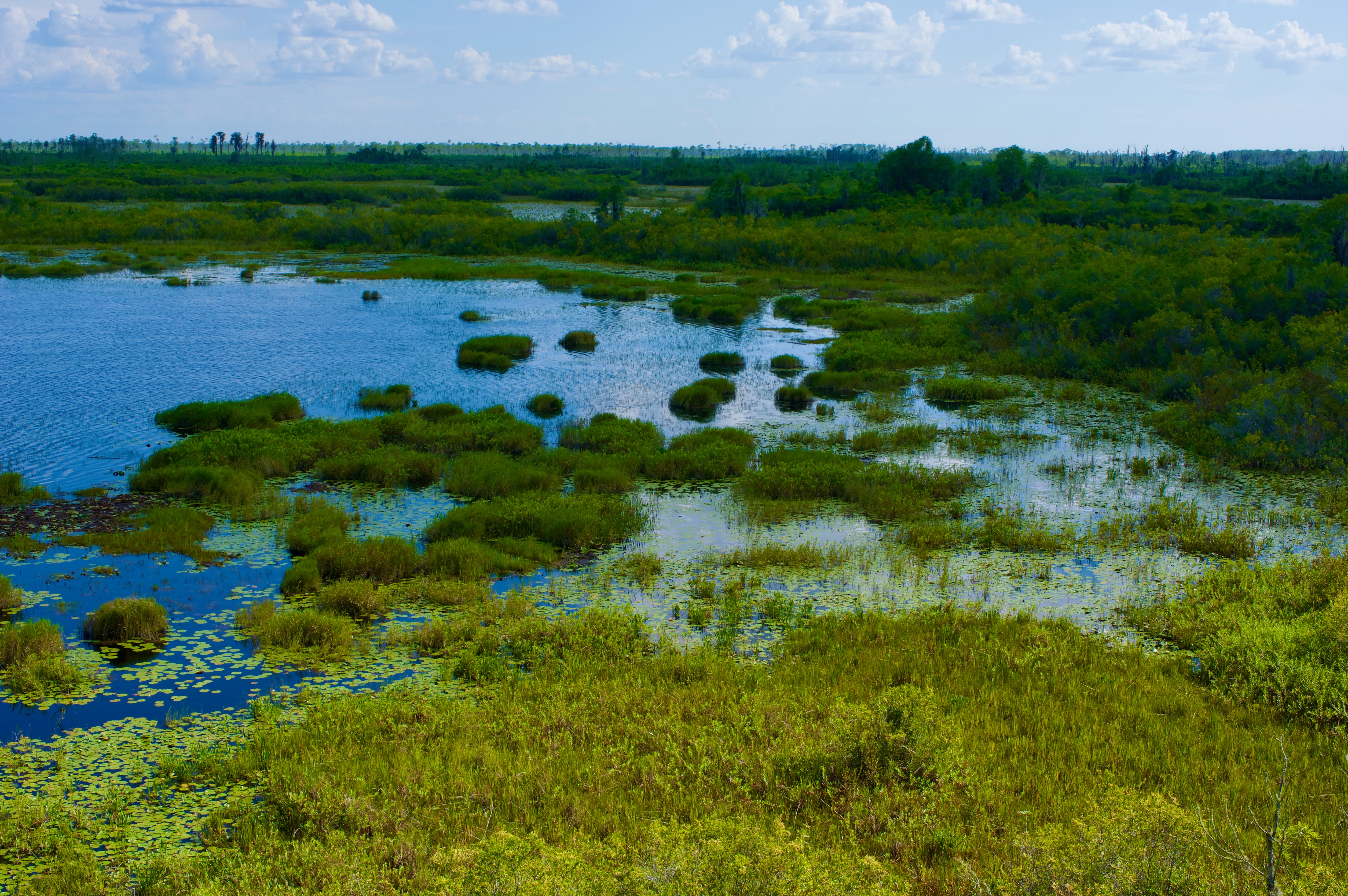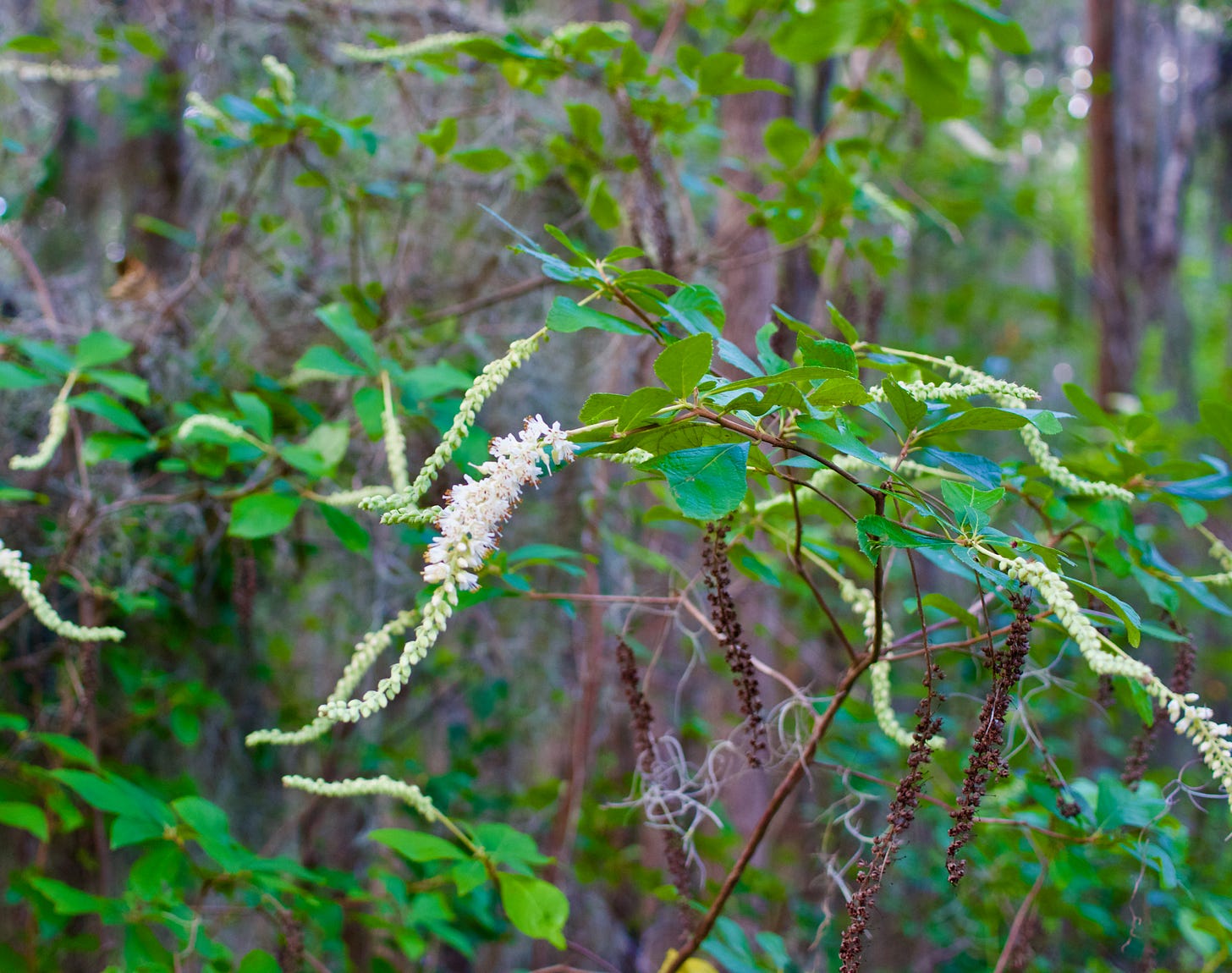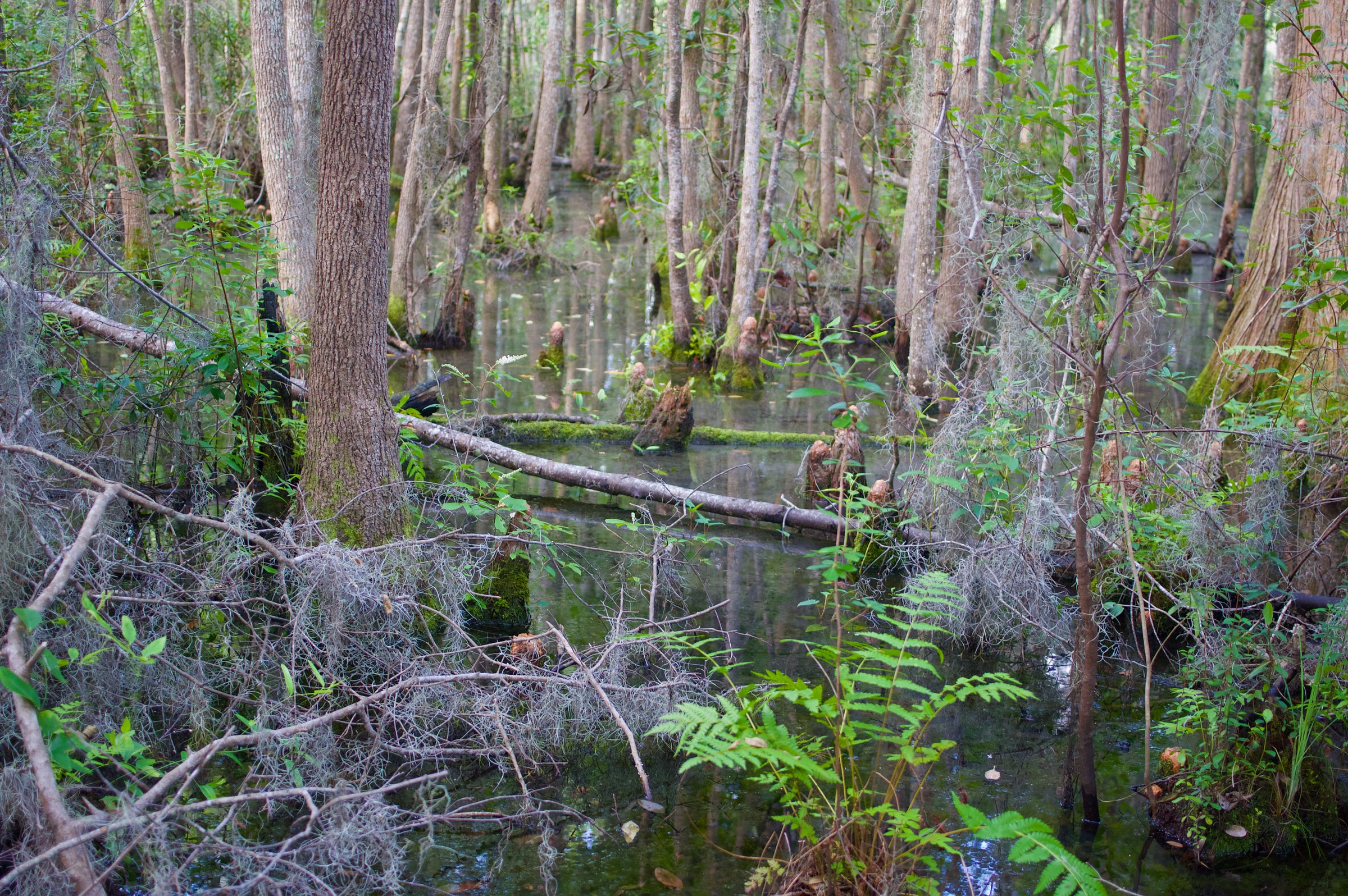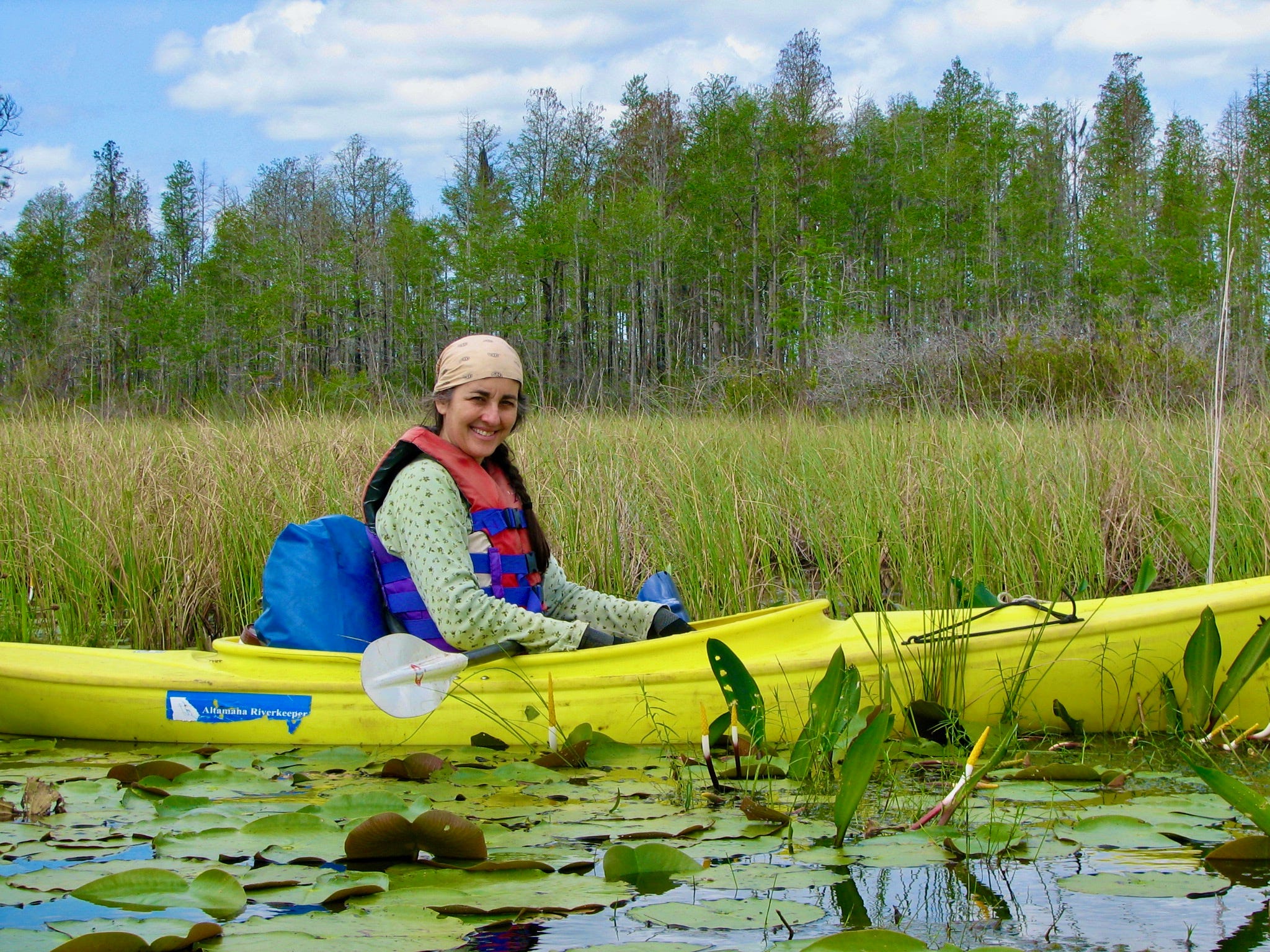Polish up your sword and shield, because we’re going to battle, my friend. I’m going in and so are you.
The aliens are trying to kidnap Okefenokee Swamp, and we have to save it.
Get out your loincloth and your knee-high lace-up boots. Pull on your cape.
Let’s get going.
In short, a mining company based in Alabama, Twin Pines, wants the titanium dioxide that can be found under Okefenokee Swamp; and hydrologists are in fits because they predict that this mining will disrupt ancient water patterns and destroy a rare and sacred jewel.
I wrote about this in The Bitter Southerner, in “Okefenokee, Heavy and Precious,” published in conjunction with the Southern Environmental Law Center. That piece gives you the whole story about the current battle to save our great swamp. You probably read it.
Here’s a paragraph from the story:
If you don’t know the Okefenokee, it’s a gigantic, ethereal, god-touched swamp in southeast Georgia that’s like no other place on earth. It’s a world wonder — nearly 700 square miles of labyrinthine wildness, the largest blackwater swamp in North America and the largest wilderness area in the eastern U.S. This wild botanical garden serves as a haven for alligators and black bears, woodpeckers and ibises, bitterns and cranes.
(Please just go look again at the photography by Gregory Miller in that story. It’s killer.)
Twin Pines has not even come close to showing that their mine will not harm the swamp.
You’d expect the federal government to step in and stop a titanium dioxide mine on the doorstep of one of the world’s largest peatlands (as Annie Proulx described it in her book Fen, Bog & Swamp) but some weird political jitterbugging has been going on. The Army Corps has said that it has no jurisdiction in protecting this earthly treasure under the Clean Water Act. The feds have lobbed the issue back to the State of Georgia.
That’s where we are now.
Twin Pines still needs a permit from the Georgia Environmental Protection Division. “EPD is taking the environmental impacts of the mine seriously,” Kelly Moser of SELC told me. “If Twin Pines wants to pursue mining at the site, it has to secure four state permits. It has to show that the mine is not going to hurt the swamp, and Twin Pines has not even come close to doing that.”
Did you hear what she said?
Now we’re at a pivotal moment. EPD has opened the public comment period on whether or not they should approve a mine at the edge of Okefenokee Swamp.
Are you with me?
We can speak now. Right now.
Here’s what we need: We need YOU to step up and be part of a gigantic intergalactic force that is fighting for the life of Okefenokee Swamp.
Are you hearing me?
We need YOU.
You’ve got to write a letter. Today, if possible. The Georgia EPD opened the 60-day comment period on January 19.
Thirty days are almost up. We have 30 to go.
Last time we did this public-comment thing, over 100,000 letters rolled in from all 50 states and 36 countries. Bill Sapp of SELC told me that. He said it was unheard of.
Well, 100K is not enough. Let’s do 100M.
K to M.
Kilo to Mega.
It’s time for a MEGA-response to a pathetic idea to destroy a refuge in order to mine for toothpaste, marshmallow, and paper whitener: the whitest white.
Your Part of the Mission
Write a letter. This will go to Mr. Richard Dunn of the Georgia EPD.
On the landing page of the Okefenokee Protection Alliance is a form letter that has been drafted for you. You can easily and quickly fill in your personal comments, and then you can either hit “send” and it flies over to the EPD, or you can print and mail the letter yourself.
If you Want to Devote More Time, Energy, & Soul
More information on the Draft Plan can be found here. If you need help crafting your comments, please see the Okefenokee Protection Alliance's (OPA) talking points here, or you can request an Okefenokee Toolkit from OPA partners, the Georgia Water Coalition.
Please Register for the Virtual Public Meeting
EPD has scheduled two virtual public meetings on Feb. 21 and Feb. 23 at 6 p.m. ET. Please attend to voice your concern and opposition to Twin Pines' mining proposal — actually, please attend to show your love for the Okefenokee. We really need lawyers and policy makers. The EPD sez that it is specifically asking for people who can address “whether the draft MLUP and supporting documents adequately meet statutory and regulatory requirements.”
Event Details
WHAT: Georgia EPD Public Meetings on the Twin Pines Draft Mining Land Use Plan
WHEN: Tuesday, February 21, or Wednesday, February 23, both at 6 p.m. Eastern
WHERE: online
RSVP: Please register for one of the two virtual meetings here: https://parkb.it/okefhearing
Let’s Give It Permanent Protection
Do you know why Georgia has the most extensive and beautiful salt marshes on the Atlantic coast?
Because we saved them!
The Okefenokee Protection Act (HB 71) will do just that for the Okefenokee.
As environmental strategist Chandra Brown recently wrote, “Over 50 years ago, a corporation proposed to mine phosphate in Georgia's marshes. Public outcry ensued over the permit and ultimately ended the proposal to mine the marsh. But the Georgia's saltmarsh remained vulnerable to future mining threats. And Georgia's General Assembly answered the threat by passing the Coastal Marshland Protection Act in 1970.
“Thanks to this important legislation, Georgia's 100-mile coastline is home to nearly 1/3 of all the saltmarsh remaining on the East Coast of the US.”
The list of cosponsors for the Okefenokee Protection Act continues to grow. Here's the updated cosponsor list.
Will you call, email or text your representative and ask them to sign HB 71?
THE CURRENT, the premiere e-news outlet of coastal Georgia, wrote:
Republican Rep. Darlene Taylor, from Thomasville, sponsored the bill. Coastal area Reps. Ron Stephens (R-Savannah); Jesse Petrea (R-Savannah); Don Hogan (R- St. Simons); Al Williams (D-Midway) and Bill Hitchens (R-Rincon) are co-sponsors as are nine other Republicans and three other Democrats from across the state.
Taylor said a constituent brought the mining issue to her attention. She then visited the site, toured the potential mine, and consulted with a geologist.
“I am not active in the ‘environmental arena,’ but like most people l do care about the Great Outdoors,” Taylor wrote in an email. “The Okefenokee is special, it is different. It needs to be valued and preserved.”
Again, please contact your legislators and urge them to join their colleagues in protecting the Okefenokee. You can find a Protect Georgia action page here: www.protectgeorgia.org/okefenokee
I Have Seen the Warrior
If you are orbiting the far universe of the swamp and want to know more, here is a story about crossing Okefenokee with a young friend who accidentally drank poison—lamp oil that I unthinkingly poured into a Gatorade bottle and left in plain sight. “I Have Seen the Warrior: Crossing the Okefenokee” ran in terrain.org and then came out in Wild Spectacle, the book. It’s a powerful feminist story, if you haven’t seen it.
We Have Met the Enemy
And the enemy will not prevail.









Thank you Janisse for posting this and all the ways we can respond to this environmental threat and act to protect the Okefenokee and surrounding area from harm. I wrote letters before against it and will make calls and do it again today!
After listening to comments on the Zoom meeting tonight, I emailed my concerns to twinpines.comment@dnr.ga.gov. You know, the aquifer.